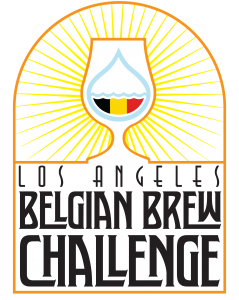23E – Gueuze
Overall Impression: A complex, pleasantly sour but balanced wild Belgian wheat beer that is highly carbonated and very refreshing. The spontaneous fermentation character can provide a very interesting complexity, with a wide range of wild barnyard, horse blanket, or leather characteristics intermingling with citrusy-fruity flavors and acidity.
Aroma: A moderately sour aroma blends with aromas described as barnyard, leather, earthy, goaty, hay, horsey, and horse blanket. While some may be more dominantly sour, balance is the key and denotes a better gueuze. Commonly fruity with aromas of citrus fruits (often grapefruit), apples or other light fruits, rhubarb, or honey. A very mild oak aroma is considered favorable. An enteric, smoky, cigar-like, or cheesy aroma is unfavorable. No hop aroma.
Appearance: Golden color, with excellent clarity and a thick, rocky, mousse-like, white head that seems to last forever. Always effervescent.
Flavor: A moderately sour character is classically in balance with the malt, wheat and barnyard characteristics. A low, complementary sweetness may be present but higher levels are not traditional. While some may be more dominantly sour, balance is the key and denotes a better gueuze. A varied fruit flavor is common, and can have a honey-like character. A mild vanilla and/or oak flavor is occasionally noticeable. The malt is generally low and bready-grainy. An enteric, smoky or cigar-like character is undesirable. Hop bitterness is generally absent but a very low hop bitterness may occasionally be perceived; sourness provides most of the balance. Crisp, dry, and tart finish. No hop flavor.
Mouthfeel: Light to medium-light body. In spite of the low finishing gravity, the many mouth-filling flavors prevent the beer from feeling like water. Has a low to high tart, puckering quality without being sharply astringent. Some versions have a light warming character. Highly carbonated.
Comments: Gueuze is traditionally produced by mixing one, two, and three-year old lambic. “Young” lambic contains fermentable sugars while old lambic has the characteristic “wild” taste of the Senne River valley. A noticeable vinegary or cidery character is considered a fault by Belgian brewers. A good gueuze is not the most pungent, but possesses a full and tantalizing bouquet, a sharp aroma, and a soft, velvety flavor. Lambic is served uncarbonated, while gueuze is served effervescent. Products marked oude or ville are considered most traditional.
History: Spontaneously fermented wild ales from the area in and around Brussels (the Senne Valley) stem from a farmhouse brewing and blending tradition several centuries old. The number of producers is constantly dwindling and some producers are untraditionally sweetening their products (post-fermentation) to make them more palatable to a wider audience. These guidelines describe the traditional dry product.
Characteristic Ingredients: Unmalted wheat (30-40%), Pilsner malt and aged hops (3 years) are used. The aged hops are used more for preservative effects than bitterness, and makes actual bitterness levels difficult to estimate. Traditionally these beers are spontaneously fermented with naturally occurring yeast and bacteria in predominately oaken barrels. The barrels used are old and have little oak character, so don’t expect a fresh or forward oak character – more neutral is typical. Home-brewed and craft-brewed versions are more typically made with pure cultures of yeast commonly including Saccharomyces, Brettanomyces, Pediococcus and Lactobacillus in an attempt to recreate the effects of the dominant microbiota of Brussels and the surrounding countryside of the Senne River valley. Cultures taken from bottles are sometimes used but there is no simple way of knowing what organisms are still viable.
Style Comparison: More complex and carbonated than a lambic. The sourness isn’t necessarily higher, but it tends to have more of a well-developed wild character.
Vital Statistics:
OG: 1.040 – 1.060
IBUs: 0 – 10
FG: 1.000 – 1.006
SRM: 3 – 7
ABV: 5.0 – 8.0%
Commercial Examples: Boon Oude Gueuze, Boon Oude Gueuze Mariage Parfait, Cantillon Gueuze, De Cam Gueuze, De Cam/Drei Fonteinen Millennium Gueuze, Drie Fonteinen Oud Gueuze, Girardin Gueuze (Black Label), Hanssens Oude Gueuze, Lindemans Gueuze Cuvée René, Mort Subite (Unfiltered) Gueuze, Oud Beersel Oude Gueuze
